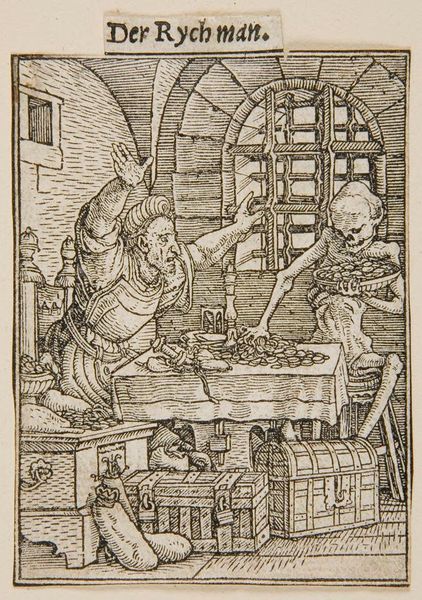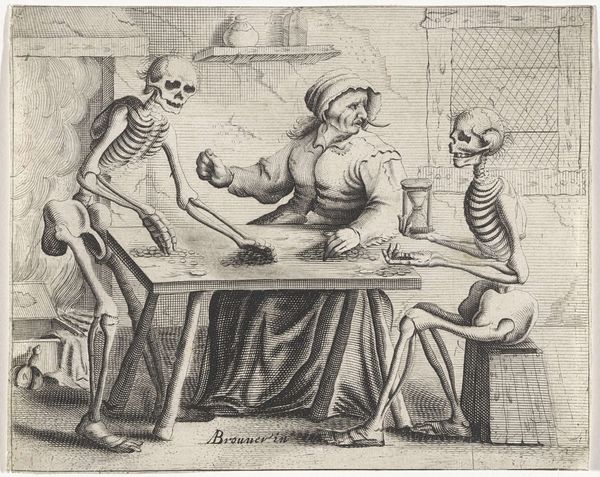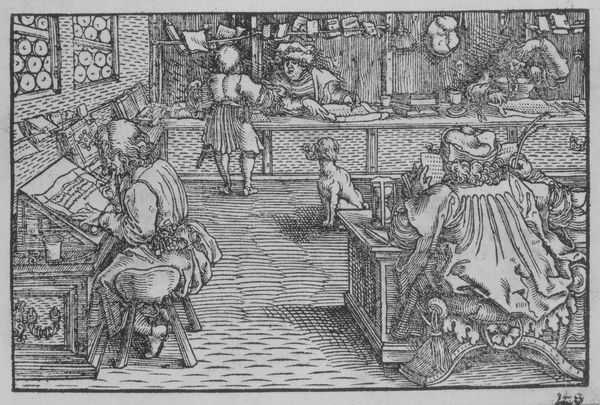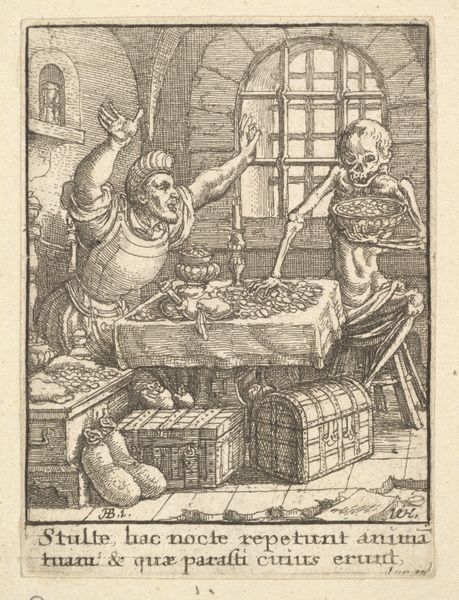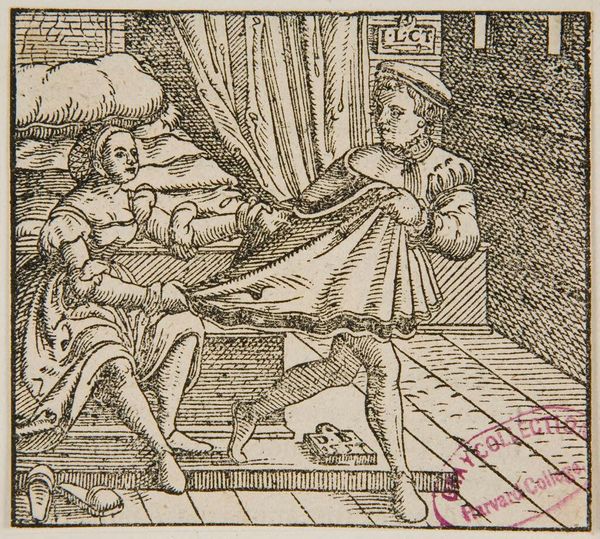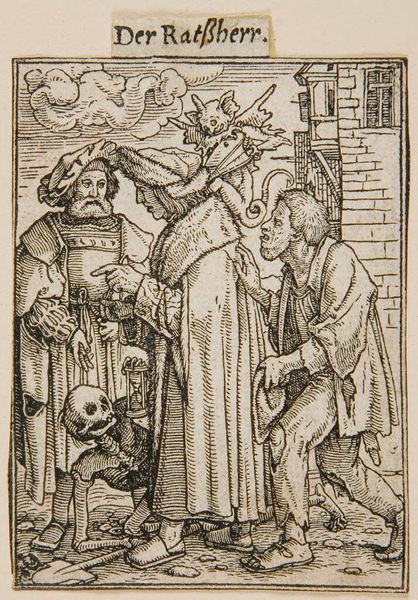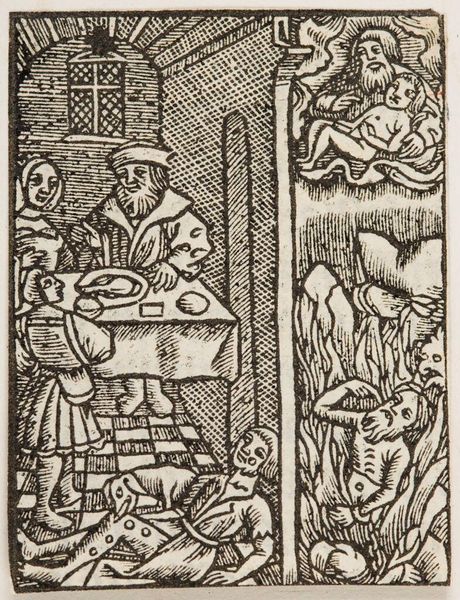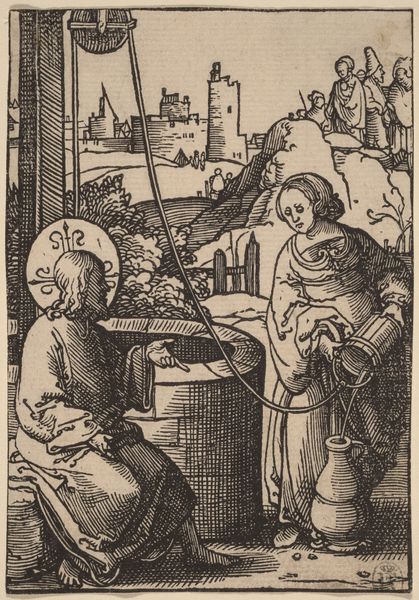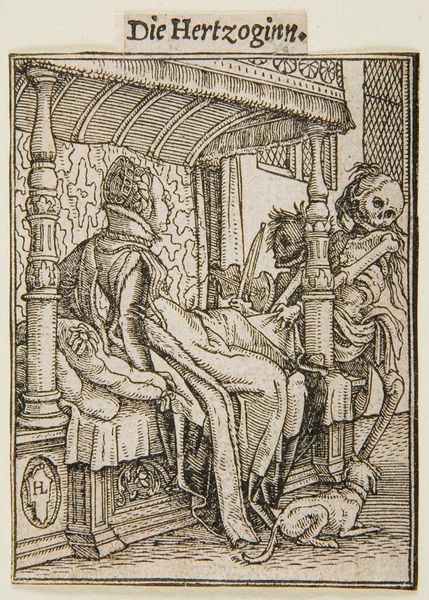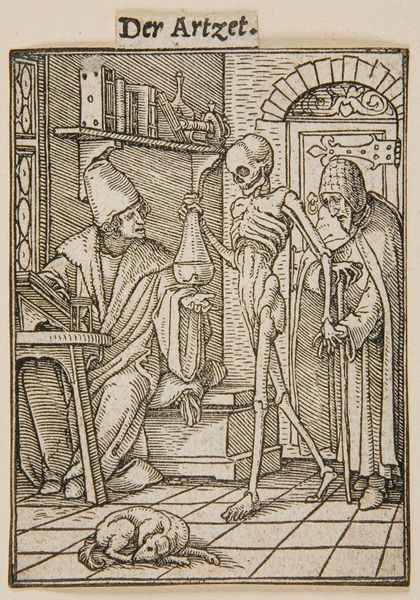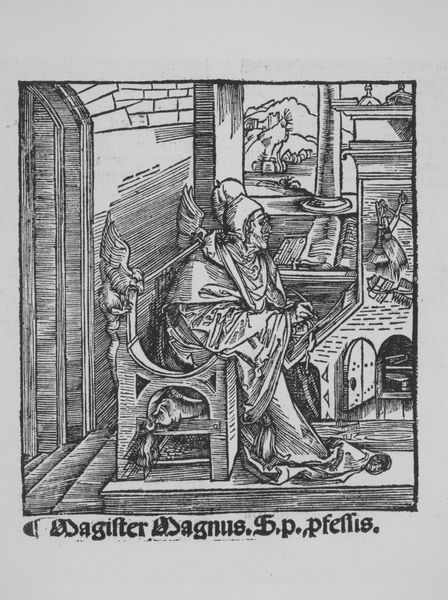
drawing, print, intaglio, woodcut
#
drawing
#
allegories
#
allegory
#
narrative-art
# print
#
death
#
intaglio
#
mannerism
#
figuration
#
woodcut
#
history-painting
#
northern-renaissance
Copyright: Public domain
Editor: Holbein the Younger’s "Death and the Miser," created around 1523, is an intaglio print of a woodcut from his Dance of Death series. The stark black and white rendering immediately emphasizes the narrative—a miser confronted by Death himself. What do you see in this piece, considering Holbein’s process? Curator: Holbein’s choice of the woodcut, a relatively accessible and reproducible medium, is crucial. Think about the societal function it served. This wasn't fine art destined for a palace; it was a means of disseminating a moral message to a broader public through accessible prints. The image itself details a cramped, enclosed space filled with earthly possessions: overflowing chests and scattered coins. What does the texture and density of the print’s marks tell you about labor and value at the time? Editor: It feels very deliberately crafted to showcase, well, the stuff. The detailed rendering of each coin, each lock on the chests… it’s like a cataloging of earthly goods being contrasted with the stark simplicity of Death. Curator: Precisely. And the way Holbein uses line – think about the dense cross-hatching that creates the shadows, juxtaposed with the more open lines describing Death – that points to a visual commentary on materiality itself. Death is rendered almost ethereal, lacking the "weight" of the miser and his possessions. Holbein masterfully employs a readily available process like the woodcut to challenge traditional distinctions between high art and moral teaching. The act of reproducing these prints implicates the culture that consumes them. Editor: So, by making these prints widely available, he’s essentially making everyone confront this relationship with material wealth? Curator: Exactly. Holbein uses his skill in printmaking to critique not just individual greed, but the pervasive societal obsession with material wealth and our inevitable reckoning. The material of the woodblock itself enabled this critique to circulate widely, creating new meanings in various markets for art and morality. Editor: I never thought about the process of creating and distributing the artwork as being such an integral part of its message! Thank you.
Comments
No comments
Be the first to comment and join the conversation on the ultimate creative platform.

